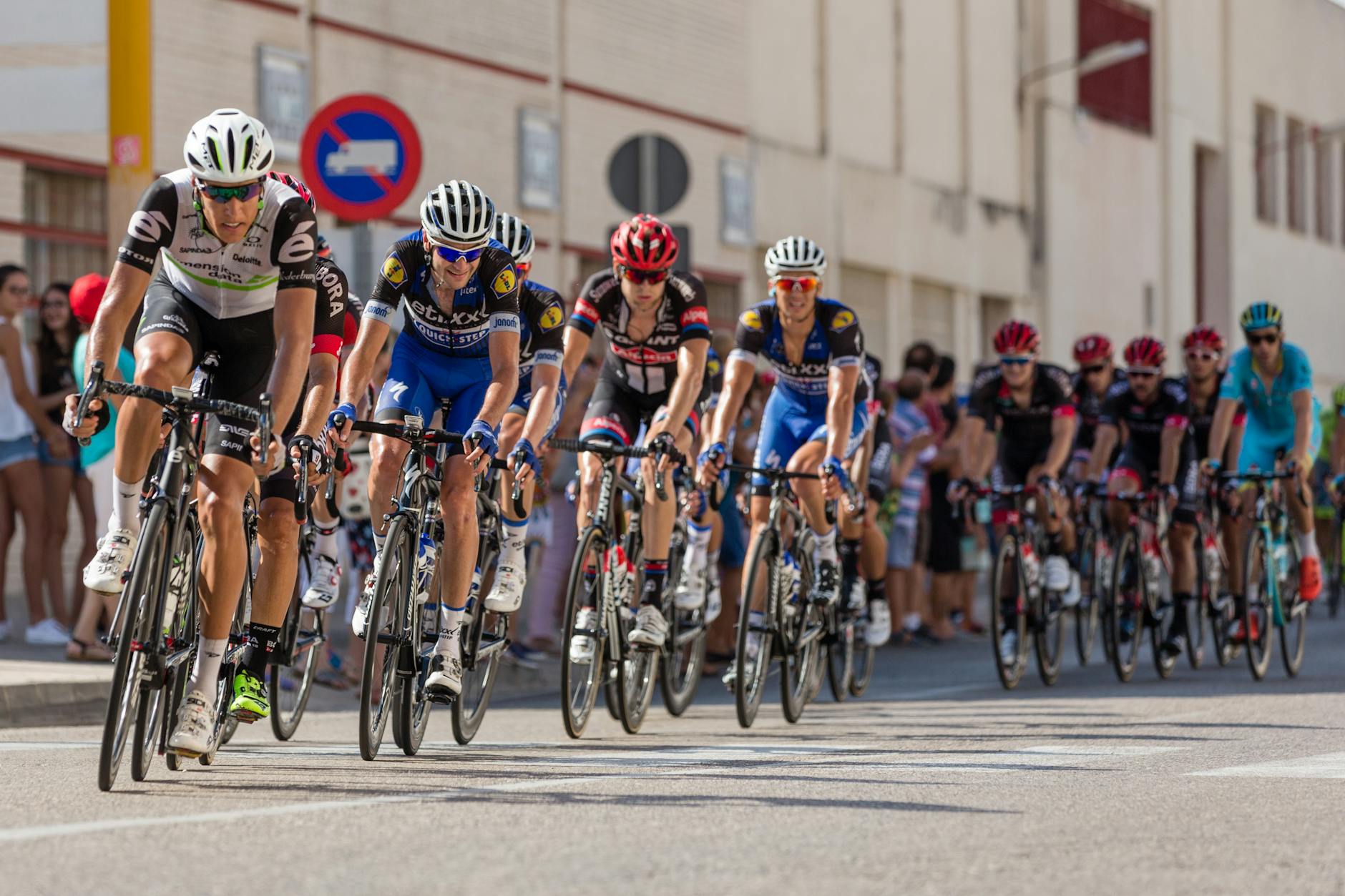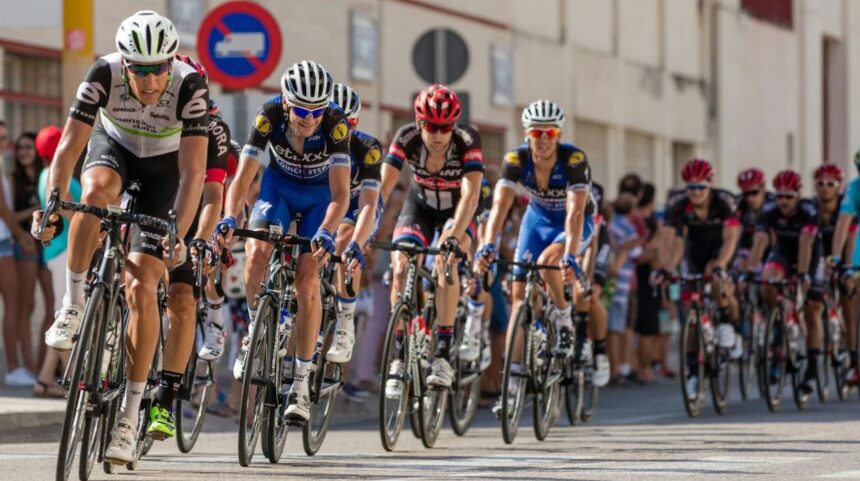Paris Roubaix 2024–
Mastering the Art of Pavé Riding: Pro Tips for Conquering Paris-Roubaix 2024
Mastering the Art of Pavé Riding: Pro Tips for Conquering Paris-Roubaix 2024
Welcome to our comprehensive guide on mastering the art of pavé riding for Paris-Roubaix 2024!
Paris-Roubaix, known as the “Hell of the North,” is one of the oldest and most challenging one-day professional cycling races in the world. Its cobblestone sections, or pavé, pose a formidable test to even the most seasoned riders, demanding a unique set of skills and strategies to conquer them effectively.
In this blog post, we will delve into the significance of Paris-Roubaix in the cycling world, highlighting its revered status and the admiration it commands from cyclists and fans alike. The unforgiving nature of the pavé sections, with their bone-rattling terrain and potential for mechanical mishaps, adds an element of unpredictability that sets this race apart from all others.
Our aim here is to provide you with expert tips and insider knowledge to help you navigate the pavé like a pro, enhancing your performance and confidence on these notoriously challenging surfaces. From equipment choices to riding techniques, we’ve got you covered with everything you need to know to tackle the pavé with skill and finesse.
So, whether you’re a seasoned cyclist looking to fine-tune your pavé-riding prowess or a newcomer gearing up for your first Paris-Roubaix experience, this guide is designed to equip you with the tools and strategies essential for mastering the art of pavé riding and conquering the cobbled roads of Paris-Roubaix like a true champion.
Understanding the Paris-Roubaix Race
The Paris-Roubaix race, also known as ‘The Hell of the North’, is one of the oldest and most iconic one-day cycling races in the professional calendar. With its cobblestone sectors, this race presents a gruelling challenge that tests the endurance and resilience of riders. Understanding the nuances of this historic race is crucial for cyclists aiming to conquer its demanding pavé sections.
Paris Roubaix 2024
The Paris-Roubaix 2024 edition is eagerly anticipated by fans and riders alike, set to take place on [insert date here]. This prestigious event attracts top cyclists from around the world to compete in a true test of skill and determination.
Paris Roubaix 2024 Dates
The exact dates for the Paris-Roubaix 2024 race have been confirmed to be [insert dates here]. Mark your calendars as this event promises adrenaline-pumping action and breathtaking displays of cycling prowess.
Paris Roubaix 2024 Route
The Paris-Roubaix 2024 route will cover challenging terrain, including the infamous pavé sectors that have become synonymous with this race. Riders will navigate through picturesque landscapes and historic cobbled streets, showcasing their mastery of both physical capabilities and mental resilience.
Significance of Pavé Riding
Mastering pavé riding is paramount for success in the Paris-Roubaix race. The impact on performance is profound, requiring exceptional bike handling skills and unwavering mental fortitude. Riders must adapt swiftly to the uneven surfaces, maintaining balance and speed amidst the chaotic vibrations.
Characteristics of Pavé Sections
The pavé sections in Paris-Roubaix vary in surface texture and difficulty, ranging from smooth cobblestones to rough, bumpy paths. Each type demands a specific approach, with riders needing to adjust their technique and strategy accordingly. Navigating these challenging terrains requires a harmonious blend of strength, agility, and tactical precision.
Understanding the Paris-Roubaix race entails embracing its rich history, recognising the allure of its nickname ‘The Hell of the North’, and acknowledging the pivotal role that pavé sections play in shaping the outcome of this legendary competition. Cyclists who harness the essence of pavé riding unlock the potential to etch their names in the annals of cycling greatness, conquering not just the physical obstacles but also the indomitable spirit of the Paris-Roubaix.
Training for Pavé Riding
Riding the cobbles of Paris Roubaix demands more than just physical endurance; it requires specific training to conquer the challenging pavé sections. Here’s how you can prepare effectively for the rigours of pavé riding:
Strength and Endurance Training
Strength Exercises:
To excel on pavé, focus on strengthening key muscle groups like quadriceps, hamstrings, glutes, and core. Incorporate exercises like squats, lunges, and deadlifts to build power and stability in these crucial areas. These exercises will help you navigate the uneven terrain and maintain control over your bike.
Endurance Training:
Simulating race conditions is essential for pavé preparation. Include long rides on rough terrain in your training plan to familiarise yourself with the constant vibrations and jolts experienced during the race. Interval training can also enhance your ability to maintain speed and power on the demanding cobbles.
Bike Setup and Maintenance
Ensuring your bike is optimised for pavé riding can make a significant difference in your performance on race day. Here are some tips to consider:
Bike Modifications:
- Tyre Choice: Opt for wider tyres with lower pressure to improve shock absorption and traction on the pavé.
- Tyre Pressure Adjustments: Experiment with varying tyre pressures to find the optimal setting that offers a balance between grip and comfort.
- Suspension Setup: Adjust your suspension to dampen vibrations and reduce the impact of uneven surfaces on your body.
Maintenance Tips:
Regular bike maintenance is crucial to prevent mechanical issues during the race. Check your bike’s components, including brakes, gears, and wheels, to ensure everything is in top condition. A well-maintained bike can enhance your performance and reduce the risk of unexpected breakdowns on the pavé.
Training effectively for pavé riding involves a combination of physical preparation and bike optimisation. By incorporating strength and endurance exercises into your regimen and fine-tuning your bike setup, you can boost your confidence and performance on the challenging cobbles of Paris Roubaix.
Check out Cycling Weekly for more insights on training techniques for pavé riding.
 Photo by Pixabay
Photo by Pixabay
Techniques for Mastering Pavé Sections
Riding on pavé sections, especially during a challenging race like Paris Roubaix, requires specific techniques to ensure control and speed. Let’s delve into some key strategies for navigating these rough surfaces effectively.
Body Positioning and Handling
Maintaining the right body positioning is crucial when tackling pavé sections. To optimise control and stability, ensure your grip on the handlebars is firm but not tense. Flex your arms slightly to absorb shocks and vibrations from the uneven surface, allowing your bike to move freely underneath you. By bending your elbows and slightly lifting your body off the saddle, you can better adapt to the unpredictability of the cobblestones. This technique not only enhances comfort but also aids in preventing fatigue during long stretches of rough terrain.
 Photo by Centre for Ageing Better
Photo by Centre for Ageing Better
Cornering and Braking Techniques
When approaching corners on pavé sections, it’s essential to adjust your speed and maintain a smooth line to prevent skidding. Lean your bike gently into the turn while keeping your body weight centred over the bike. To brake effectively without losing traction, apply gradual pressure to both brakes rather than abrupt stops. This technique allows you to control your speed while preserving grip on the uneven surface. Additionally, focus on carrying momentum through challenging sections by anticipating obstacles and adjusting your speed accordingly. By mastering cornering and braking techniques, you can navigate pavé sections with confidence and agility during the Paris-Roubaix race.
These techniques require practice and concentration, but mastering them can make a significant difference in your performance on pavé surfaces. Remember, adaptability and finesse are key when conquering the challenges presented by rough terrain.
Mental Preparation and Focus
Before the gruelling Paris-Roubaix race, mental preparation plays a vital role in achieving peak performance on the challenging pavé sections. Staying focused, building resilience, and overcoming the psychological challenges of pavé riding are key elements that can make a difference in this prestigious race.
Visualization and Mental Training
Visualisation techniques are powerful tools for pavé riders to enhance their performance. By vividly imagining themselves smoothly navigating the cobblestone sections, cyclists can familiarise themselves with the terrain and mentally prepare for the race. Mental training exercises such as positive affirmations and goal-setting can help boost confidence and motivation. Strategies for maintaining a positive mindset during the race, such as focusing on the present moment and controlling breathing, are essential for riders to stay composed and perform at their best.
 Photo by Mikhail Nilov
Photo by Mikhail Nilov
Recovery and Post-Race Care
After conquering the challenging pavé of Paris Roubaix, prioritising your recovery and post-race care is vital to aid your body in recuperating and preparing for future competitions. Let’s delve into two crucial aspects: nutrition and hydration, as well as rest and regeneration.
Nutrition and Hydration
Ensuring you refuel your body with the right nutrients and stay adequately hydrated post-race can significantly impact your recovery. Opt for a balanced meal focusing on lean proteins, complex carbohydrates, and healthy fats to aid muscle repair. Consider foods rich in antioxidants like berries, leafy greens, and nuts to reduce inflammation. Replenishing electrolytes with a sports drink or coconut water can help restore your body’s balance. Don’t forget the importance of hydration; aim to drink plenty of water throughout the day to support recovery.
Rest and Regeneration
Rest is key to allowing your body to recover and repair after the gruelling race. Adequate sleep is crucial for muscle recovery and overall well-being. Consider incorporating relaxation techniques such as yoga or meditation to relieve muscle tension and promote relaxation. Additionally, massage therapy can be beneficial in reducing muscle soreness and improving circulation post-race. Prioritise rest and recovery to ensure your body is ready for the next challenge.
 Photo by Ivan Samkov
Photo by Ivan Samkov
Conclusion
Mastering pavé riding for Paris-Roubaix 2024 requires dedication, rigorous training, and unwavering mental fortitude. Embrace the unique challenges of the cobblestone sections, knowing that each bump and jolt is a test of your resilience and skill. Approach the pavé with confidence, knowing that your preparation and commitment will carry you through the toughest sections. Stay focused, stay strong, and conquer the cobbles with unwavering determination. Paris-Roubaix awaits those who dare to ride with courage and mastery.













